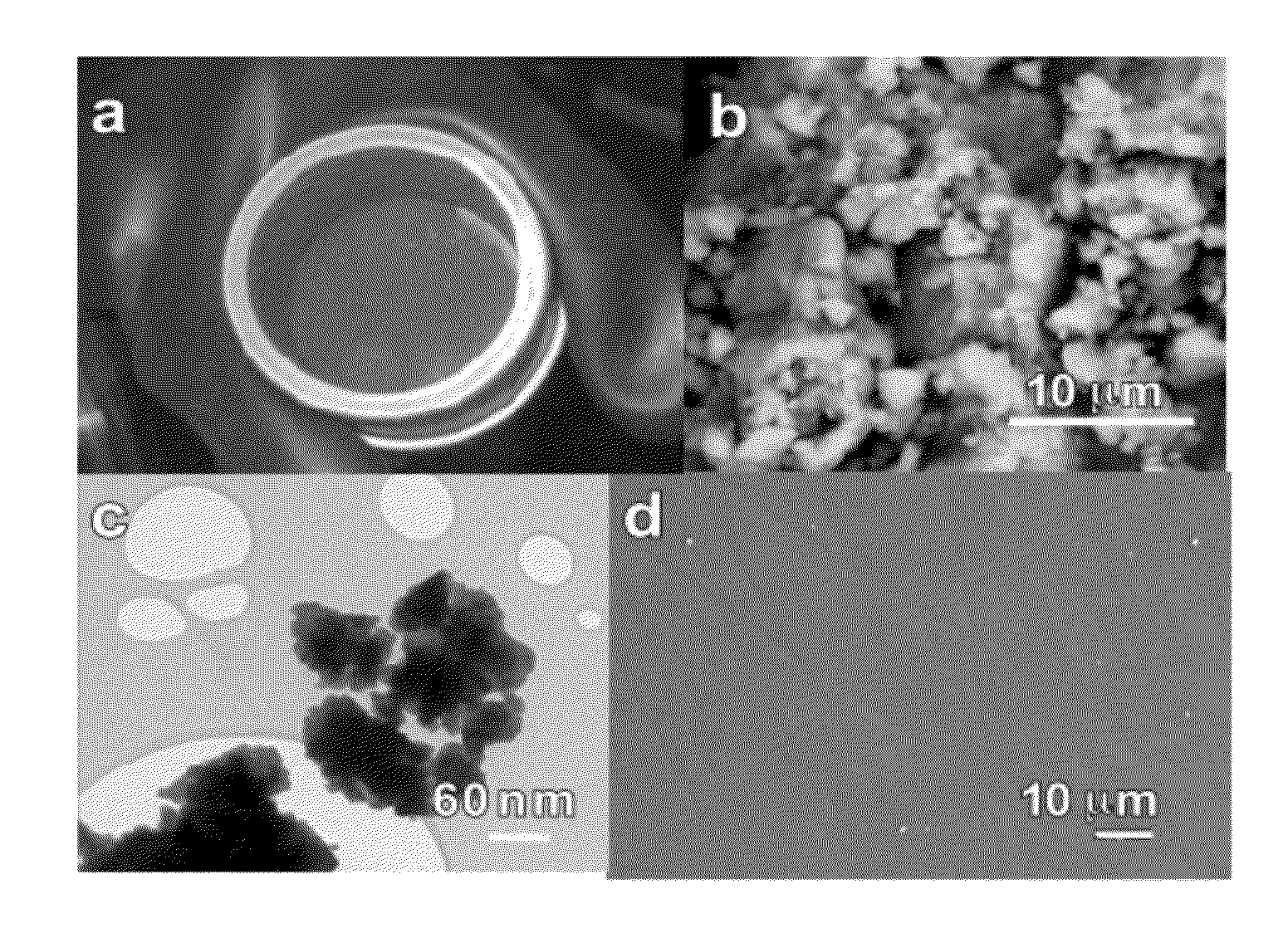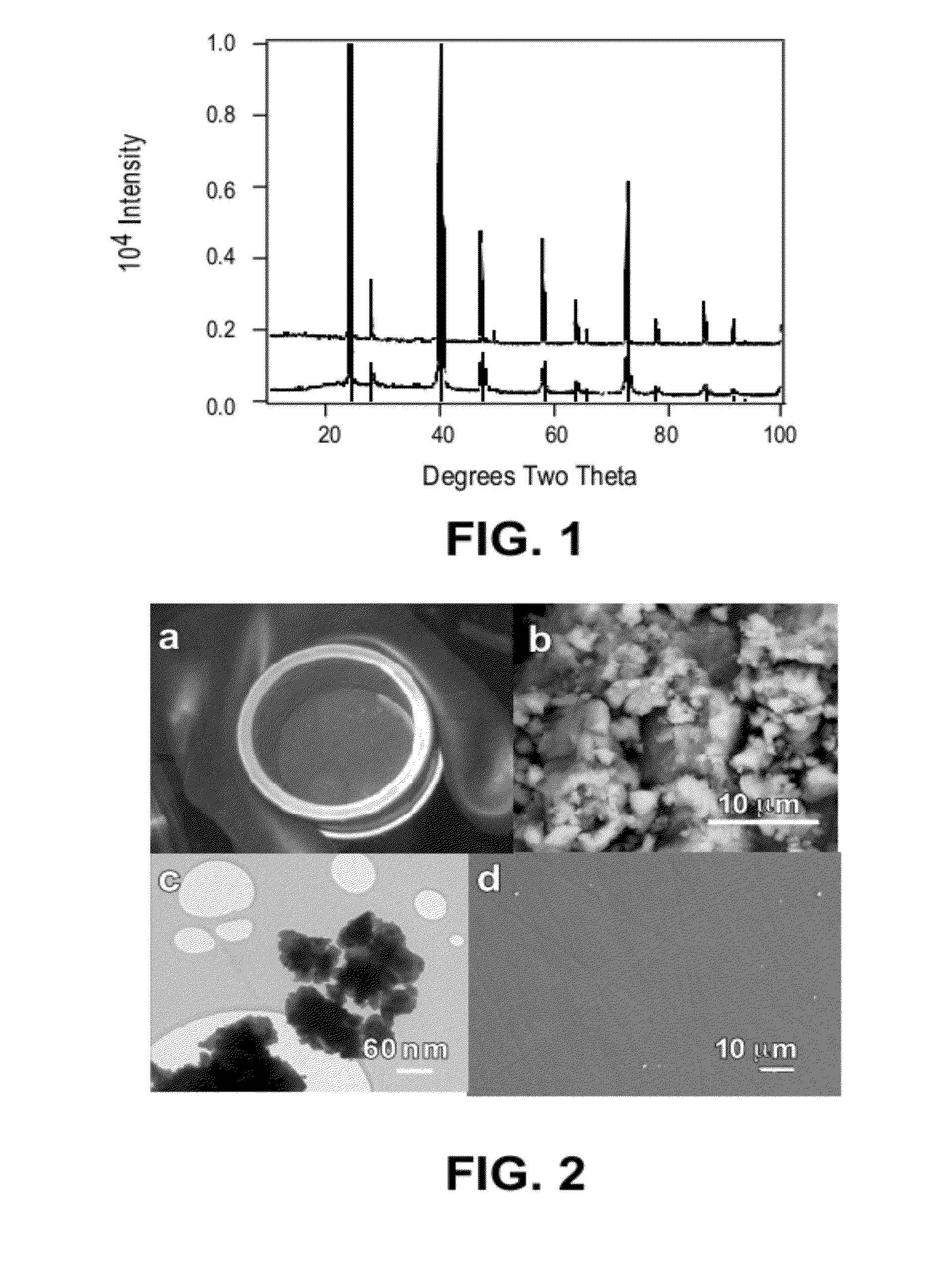Mechanochemical synthesis and thermoelectric properties of magnesium silicide and related alloys
a technology of thermoelectric properties and magnesium silicide, which is applied in the field of mechanochemical synthesis and thermoelectric properties of magnesium silicide and related alloys, can solve the problems of magnesium loss, 25% of gasoline that is combusted, and is actually used
- Summary
- Abstract
- Description
- Claims
- Application Information
AI Technical Summary
Problems solved by technology
Method used
Image
Examples
example 1
Producing A Substantially Phase Pure Mg2Si
[0060]This example provides a method according to the present invention of producing a substantially phase pure compound of Mg2Si.
[0061]Unfunctionalized n-type Mg2Si powders were prepared by high-energy ball milling of 325 mesh Si powder (99.999%), Mg turnings (99.8%) and Bi shot (99.999%) (all from Alfa Aesar) in an argon atmosphere. Stoichiometric amounts of the Si powder and Bi shot were added to a 55 mL tungsten carbide vial (Spex CertiPrep) using 12 mm tungsten carbide ball bearings. A stochiometric amount of Mg turnings were added in 200-500 mg increments and milled for intervals of one hour or less using a Spex CertiPrep 8000 series mill at its fixed RPM. The reaction was conducted on a 4-10 gram scale. Once all of the Mg had been incorporated into the milling vial and milled, the phase pure Mg2Si product was then loaded into 12 mm graphite dies (POCO) in an argon-filled glove box and then transferred to a uniaxial hot-press. Each sam...
example 2
Production of Mg2Ge
[0063]This example provides a method according to the present invention of producing Mg2Ge by the process described in Example 1. FIG. 9 includes a powder X-ray diffraction pattern of the product.
example 3
Production of Mg2Sn
[0064]This example provides a method according to the present invention of producing Mg2Sn by the process described in Example 1. FIG. 10 includes a powder X-ray diffraction pattern of the product.
PUM
| Property | Measurement | Unit |
|---|---|---|
| phase pure | aaaaa | aaaaa |
| phase | aaaaa | aaaaa |
| concentration | aaaaa | aaaaa |
Abstract
Description
Claims
Application Information
 Login to View More
Login to View More - R&D Engineer
- R&D Manager
- IP Professional
- Industry Leading Data Capabilities
- Powerful AI technology
- Patent DNA Extraction
Browse by: Latest US Patents, China's latest patents, Technical Efficacy Thesaurus, Application Domain, Technology Topic, Popular Technical Reports.
© 2024 PatSnap. All rights reserved.Legal|Privacy policy|Modern Slavery Act Transparency Statement|Sitemap|About US| Contact US: help@patsnap.com










